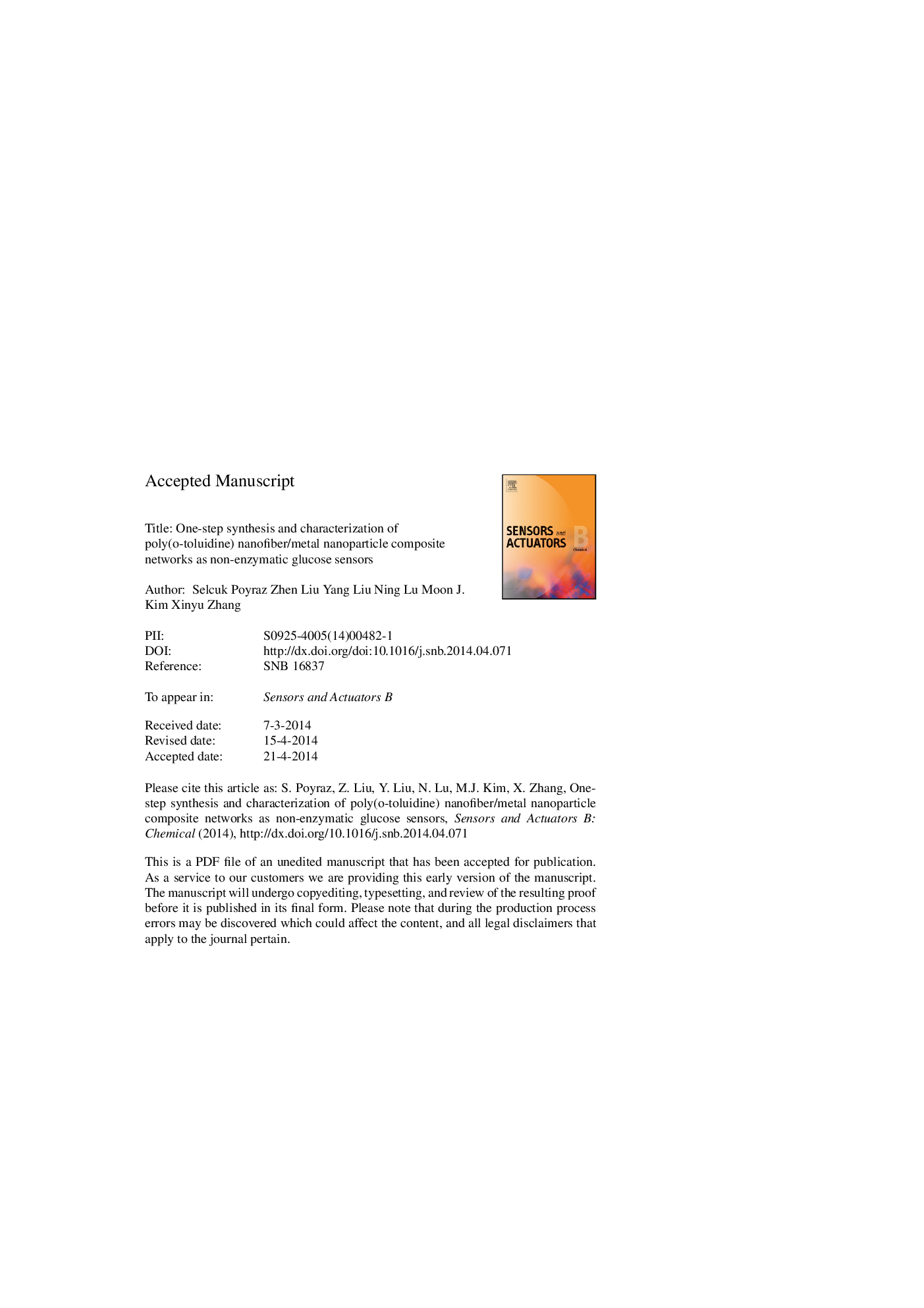| Article ID | Journal | Published Year | Pages | File Type |
|---|---|---|---|---|
| 7146477 | Sensors and Actuators B: Chemical | 2014 | 15 Pages |
Abstract
Composite networks of poly(o-toluidine) (POT) nanofibers (NFs) and gold (Au)/copper (Cu) nanoparticles (NPs) were facilely synthesized through a one-step seeding polymerization reaction and a redox/complexation process that took place between monomers and corresponding metal salt cations in aqueous medium at ambient temperature. In order to ensure the polymeric NF morphology formation and to enhance the overall oxidative potential of the different reaction media, vanadium pentoxide (V2O5) sol-gel NFs were played critical roles both as well-known seeding agents and also as the auxiliary oxidative agent. The homogenous embedment/distribution of Au and Cu NPs within 1D POT NF matrix enhanced the electron transfer process and prevented the possible catalyst NPs deformation. Furthermore, without the need of glucose oxidase (GOx) enzyme, POT-Au/Cu nanocomposites exhibited excellent bio sensitivity for glucose within a wide linear operation range of 1-30Â mM (RÂ =Â 0.99846). Multiple electrochemical cycling stability, high tolerance for chloride (Clâ) ions and high selectivity for glucose were also achieved by the these nanocomposites, since their electrodes showed negligible response to the common interfering reagents, i.e. uric acid (UA), l-ascorbic acid (AA) and 4-acetamidophenol (AP), at their physiological levels. Thus, this facile and effective seeding polymerization approach via one-step redox/complexation process can be utilized as a general methodology and effective fabrication tool to synthesize metal NP embedded nanofibrous conducting polymer (CP) networks as the building blocks for new generation non-enzymatic biosensors.
Related Topics
Physical Sciences and Engineering
Chemistry
Analytical Chemistry
Authors
Selcuk Poyraz, Zhen Liu, Yang Liu, Ning Lu, Moon J. Kim, Xinyu Zhang,
